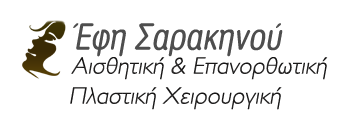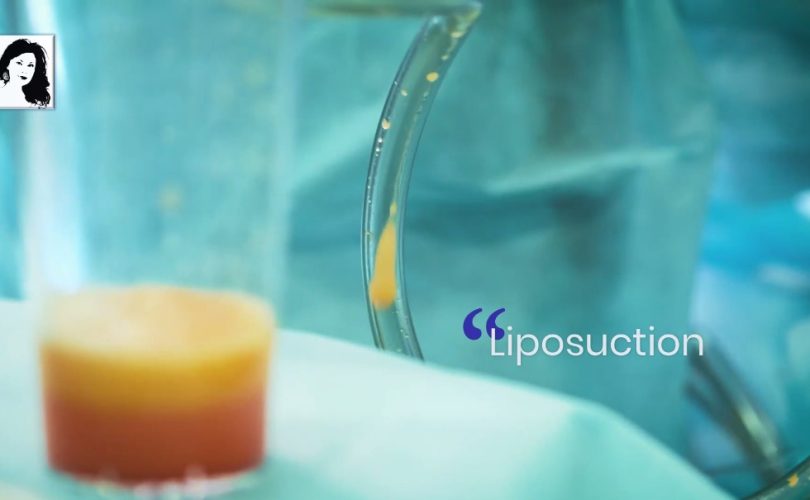Thousands of women around the world undergo liposuction every year, making it the most popular and frequent plastic surgery procedure today. It is the surgical treatment of local fat accumulation in specific areas of the body.
By removing fat from areas of the body, such as thighs, buttocks, abdomen, calves, knees, chest, face, arms, the permanent correction of local lipodystrophy is achieved.
We can also transfer from areas of excess fat to areas of deficit and thus correct anatomical anomalies (liposculpture) or achieve an increase in volume locally where needed, e.g. buttocks.
From birth we are genetically pre-determined how the fat in our body will grow. During childhood or adolescence, that is, as long as a person is in the growth phase of his body, fat cells increase in number and volume respectively.
After the body’s development is complete the cells no longer increase in number, but only in volume. Thus, an increase in fat in the body is done only by increasing the volume of cells and not their number. Exceptions to this are people who suffer from obesity at morbid levels (about twice the ideal body weight).
Depending on the body type of each person, accumulation of fat cells is observed in some places such as buttocks, abdomen, knees, neck, etc. With liposuction, a significant amount of fat cells are removed from the area. In the human body, fat, in most areas, is found in two different layers, a deep one, which is the thickest, and a superficial one, which is the thinnest.
Liposuction is mainly done in the deeper fat layer. This is mainly due to the local accumulation of fat, the so-called local thickness. Areas such as the legs or the face, where there is only one layer of fat, are at a disadvantage compared to the rest, because it is easy for irregularities to occur on the skin surface of these areas. The surface layer of fat is responsible for the appearance of cellulite. Generally, however, liposuction is performed in the deeper layers of fat. This is also one of the reasons why liposuction does not help improve cellulite.
Surgery:
The doctor will plan the areas where the operation will be performed. Usually general anesthesia or a combination of local anesthesia with sedation is used unless the area is very small in which case it is safe and not painful for the patient to use only local anesthesia. At the beginning of the operation, the tissues are injected with a saline solution of adrenaline and anesthetic that will help the liposuction process, limit bleeding and give the patient many hours without pain after the surgery. Local fat is removed with small cannulas inserted through very small 5mm skin incisions in well-hidden areas of the body.
In a liposuction operation, up to 3 liters of fat can be removed with absolute safety for the patient. In larger volume liposuctions, the burden on the body is significant and the patient may need to stay in the hospital for a few days. Immediately after the operation and before the patient wakes up, a special corset is placed which should be worn for the next 3-4 weeks. Its use is very important because it significantly reduces swelling, bruising and pain in the postoperative period. It also helps the final result as the pressure from the corset “sticks” the liposuction area. The patient usually goes home the same day or the next day.
Bruises and various degrees of edema (tissue swelling) are observed postoperatively. Very rarely, a hematoma may be observed that may require treatment. Otherwise the pain is minimal and easily treated with painkillers. Apart from the classic liposuction for the removal of local fat, today, with a similar method, we can also work on other areas of the subcutaneous fat, and achieve special improvements in our body type, such as shaping the abdominals (6-packs), as well as pectoral muscles.
In recent years, we have available techniques and tools that make the liposuction operation easier for the surgeon: liposuction assisted with ultrasound (UAL = Ultrasound Assisted Liposuction), with laser (LAL = Laser Assisted Liposuction), with pulsed vibration (PAL = Power Assisted Liposuction = vibro-liposuction), assisted with radio frequencies (RFAL = Radio-Frequensy Assisted Liposuction). These techniques offer more convenience and speed to the surgeon but do not substantially differentiate the result which is the removal of the local thickness.
Frequent questions:
How long does it take to see the result? The result is visible immediately but is “hidden” by the swelling of the tissues. In the 1st week approximately 50% of the result is visible, at the end of the month 80% and 100% after 6 months.
Is local thickness re-doing? No, as most of the fat cells have been removed from the area. Only if the patient gains a lot of weight (malignant obesity) will fat cells be regenerated there. However, in general it is good to keep our weight almost constant, but 5 kg e.g. up or down will not change the result of the operation.
Will the fat go elsewhere? No. This is a misconception. Fat doesn’t “go” anywhere.

